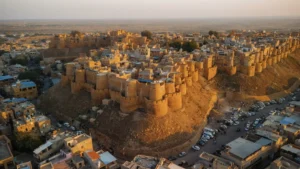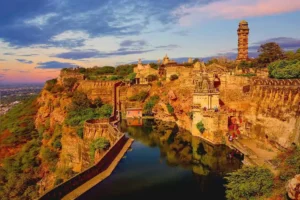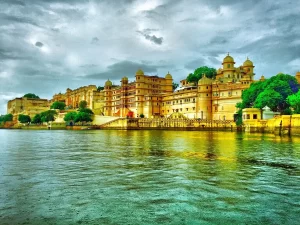Nestled in the heart of Jaipur, the vibrant capital of Rajasthan, Hawa Mahal is a masterpiece of architectural ingenuity and cultural significance. Known as the “Palace of Winds,” this iconic structure stands as a testament to the rich history, artistic brilliance, and royal heritage of India. Built in 1799 by Maharaja Sawai Pratap Singh, the Hawa Mahal continues to captivate tourists and historians with its unique design, historical relevance, and fascinating tales of the bygone era.
Historical Background
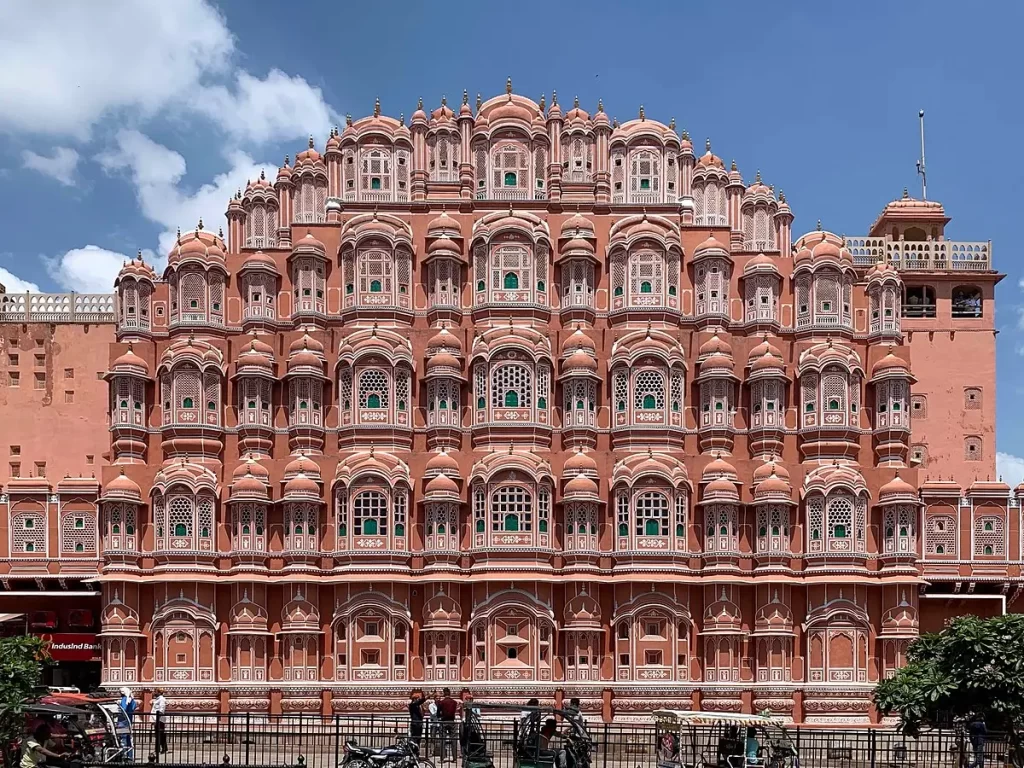
Hawa Mahal was commissioned by Maharaja Sawai Pratap Singh, inspired by the Khetri Mahal in Jhunjhunu, Rajasthan. The purpose of its construction was deeply rooted in the social norms and royal customs of the time. The palace served as a viewing gallery for the royal women, allowing them to observe the bustling streets and festive processions below without compromising their privacy—a practice aligned with the purdah system prevalent during the era.
The palace was designed by Lal Chand Ustad, a prominent architect, and reflects the grandeur of Rajputana architecture blended with Islamic Mughal elements.
Architectural Brilliance
Hawa Mahal’s distinctive architecture sets it apart as one of the most iconic landmarks in India.
1. Unique Facade
The five-story structure resembles a honeycomb of a beehive, featuring 953 intricately designed small windows, known as jharokhas. These windows are adorned with delicate latticework, ensuring ventilation and keeping the interiors cool even during scorching summers.
2. Pyramid-Like Structure
Unlike conventional palaces, Hawa Mahal lacks stairs to the upper floors. Instead, a series of ramps allow access to the higher levels, making the structure both functional and visually appealing.
3. Blend of Architectural Styles
The palace seamlessly blends Hindu Rajputana and Islamic Mughal architectural styles. The pink and red sandstone exterior is a hallmark of Jaipur’s heritage, while the arches and filigree work echo Mughal aesthetics.
4. Strategic Design for Climate
The design of Hawa Mahal exemplifies eco-friendly architecture. The unique lattice framework allows natural ventilation, creating a cooling effect. This feature also lends the palace its poetic name, “Palace of Winds.”
Cultural and Social Significance
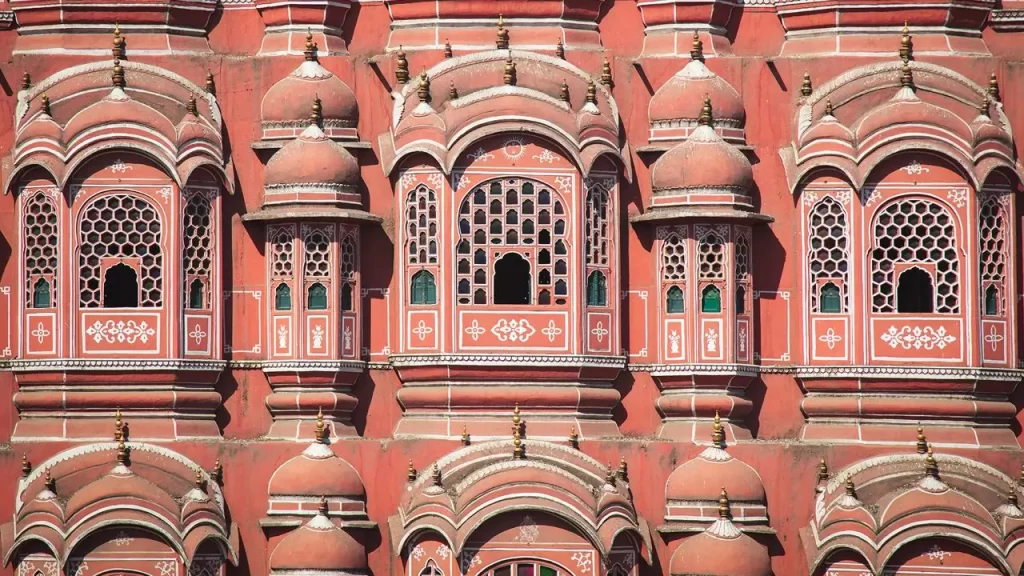
Hawa Mahal was more than a mere architectural marvel; it was a reflection of the cultural norms and royal traditions of the time.
A Palace of Privacy
The palace allowed the royal women of the court to partake in public festivities and observe the daily life of Jaipur’s streets while adhering to the strict purdah system. This aspect underscores the ingenious ways in which architecture accommodated societal customs.
A Symbol of Jaipur’s Identity
Hawa Mahal is synonymous with Jaipur’s identity. It reflects the city’s ethos and has become a symbol of its rich heritage. Its image graces postcards, travel brochures, and souvenirs, drawing countless tourists from across the globe.
Spiritual Undertones
The palace is also said to resemble the crown of Lord Krishna, as Maharaja Sawai Pratap Singh was a devout follower. This spiritual connection adds to its cultural depth.
Exploring the Interiors
Though Hawa Mahal is primarily admired for its external beauty, its interiors are equally fascinating.
Courtyards and Passages
The palace features open courtyards that connect the various chambers. These courtyards enhance its ventilation system and provide serene spaces for reflection.
Museums and Exhibitions
Today, Hawa Mahal houses a museum that offers a glimpse into Rajasthan’s history, showcasing artifacts, relics, and paintings from the royal era.
Panoramic Views
Visitors can climb to the top of the Hawa Mahal and enjoy breathtaking panoramic views of Jaipur, including the City Palace, Jantar Mantar, and the bustling Johari Bazaar.
The Role of Hawa Mahal in Tourism
Hawa Mahal plays a pivotal role in boosting Jaipur’s tourism industry. It is one of the most photographed monuments in India and is a must-visit for anyone exploring the Pink City.
A Favorite Among Photographers
The palace’s intricate details, vibrant colors, and unique design make it a favorite spot for photographers. During sunrise, the soft light enhances the beauty of the sandstone facade, creating a magical effect.
Cultural Festivals and Events
Hawa Mahal often serves as the backdrop for cultural festivals and events, including performances of Rajasthani folk music and dance. These events bring the monument to life and provide tourists with a taste of local culture.
Accessibility
Located in the heart of Jaipur, Hawa Mahal is easily accessible from major parts of the city. Its proximity to other attractions, such as the City Palace and Jantar Mantar, makes it an integral part of the Jaipur tourism circuit.
Conservation and Restoration Efforts
Over the years, the Hawa Mahal has faced challenges due to weathering and urbanization. However, consistent conservation and restoration efforts have ensured its preservation.
Government Initiatives
The Archaeological Survey of India (ASI) has played a significant role in maintaining the structural integrity of Hawa Mahal. Periodic restorations ensure that the palace retains its charm for future generations.
Heritage Tourism Promotion
Hawa Mahal is part of the UNESCO World Heritage City of Jaipur. This designation has led to increased focus on sustainable tourism and heritage conservation.
Interesting Facts about Hawa Mahal
- Historical Purpose: Hawa Mahal was designed not as a palace for royal residence but as a high-screen wall for observing street activities.
- Ventilation System: Despite being in a hot region, the palace remains cool due to its ingenious design, demonstrating an early understanding of climate-responsive architecture.
- Stairless Structure: The absence of conventional stairs is a unique feature, with ramps allowing access to the upper floors.
- World Record: With 953 windows, Hawa Mahal holds a record for having the most windows in a palace.
Conclusion
Hawa Mahal is more than just a historical structure; it is a living symbol of Jaipur’s cultural heritage and architectural brilliance. Its intricate design, historical significance, and timeless beauty make it a treasure trove of stories and an enduring marvel.
Whether you are an architecture enthusiast, a history buff, or a traveler seeking to immerse yourself in the royal grandeur of Rajasthan, a visit to Hawa Mahal is a journey into a world where tradition meets creativity. As the “Palace of Winds” continues to stand tall against the sands of time, it reminds us of the incredible artistry and vision of its creators, leaving an indelible mark on all who behold it.
So, the next time you find yourself in Jaipur, let Hawa Mahal whisk you away to an era of regal elegance and architectural splendor.

